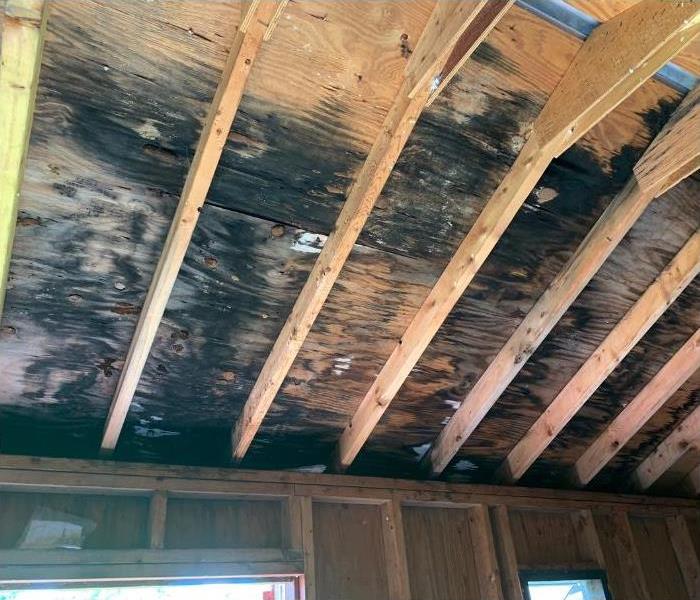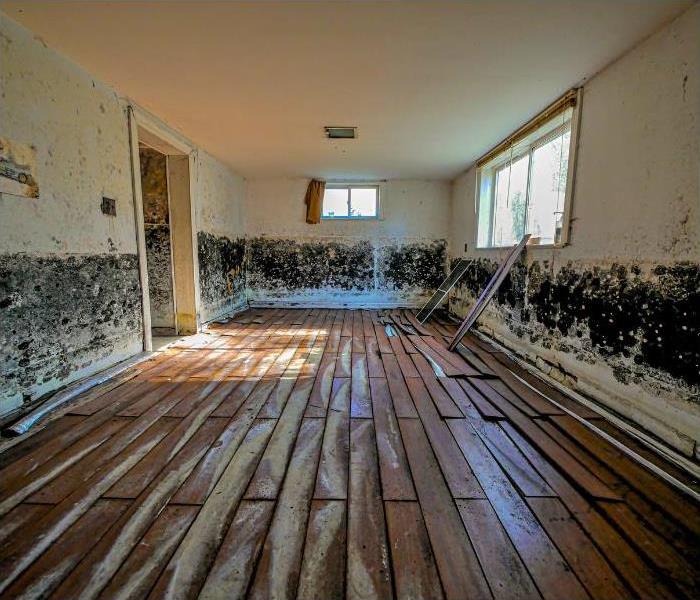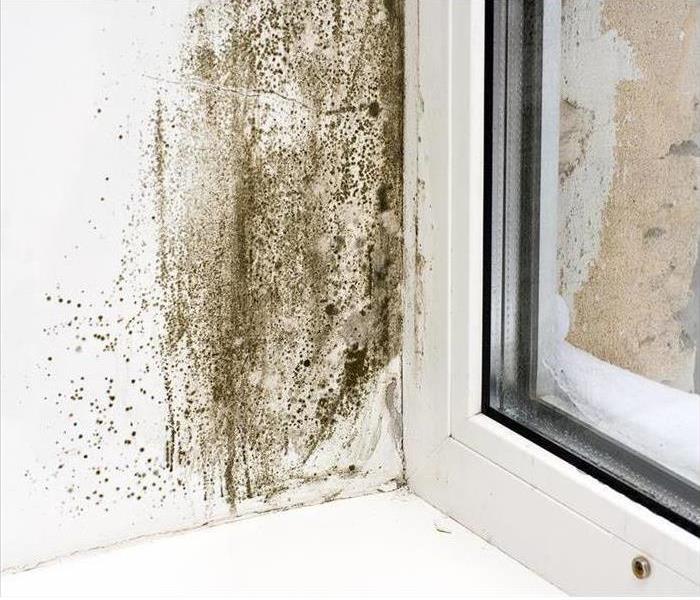Archived Mold Remediation Blog Posts
Mold Damage Restoration: How Hidden Leaking Pipes Can Affect Your Home in Sandy, UT
9/20/2024 (Permalink)
 Mold Damage Restoration in Sandy, UT
Mold Damage Restoration in Sandy, UT
When it comes to home maintenance, a hidden leaking pipe can be a homeowner's worst nightmare. In Sandy, UT, where the climate can exacerbate water damage issues, understanding how these hidden leaks can lead to severe mold problems is crucial. Mold damage restoration requires a comprehensive approach, especially when the source of the moisture is elusive. Here’s what you need to know about dealing with mold damage caused by hidden leaking pipes and how to handle the restoration process effectively.
The Hidden Threat: How Leaking Pipes Cause Mold Growth
Many homeowners in Sandy may not realize that their pipes are leaking until it's too late. A hidden leak—often in walls, ceilings, or floors—can go unnoticed for a long time. These leaks provide a constant source of moisture, which is a key ingredient for mold growth. Mold spores, which are present in the air everywhere, can settle on damp surfaces and start growing rapidly.
The conditions created by a hidden leak are ideal for mold proliferation. Mold needs three things to thrive:
Moisture: The ongoing leak provides a consistent supply of water.
Temperature: Most mold grows best in temperatures between 60-80°F.
Organic Material: Building materials like wood, drywall, and insulation are perfect food sources for mold.
When a leak occurs behind walls or under floors, it can be difficult to detect until the mold has already started to spread. By the time visible signs appear—such as discoloration or a musty smell—the mold problem may be extensive and challenging to address.
Identifying the Signs of Mold Damage
Detecting mold damage early can prevent extensive repair work and health risks. Here are some common signs that indicate a hidden leak might be causing mold damage in your Sandy home:
Musty Odors: A persistent musty smell, even if you can’t see any mold, is often an early warning sign.
Discolored Walls or Ceilings: Yellow, brown, or black spots on walls or ceilings can indicate mold growth behind surfaces.
Peeling Paint or Wallpaper: Water damage often causes paint or wallpaper to peel away.
Warped or Sagging Floors: Moisture from a leak can cause flooring to buckle or sag.
Increased Allergies: Unexplained allergy symptoms or respiratory issues can be a sign of mold exposure.
If you notice any of these signs, it’s essential to act quickly. The longer you wait, the more extensive the damage can become.
Steps to Address Mold Damage from Hidden Leaking Pipes
Locate the Source of the Leak:
The first step in mold damage restoration is finding and fixing the source of the leak. This often requires professional assistance, as leaks behind walls or under floors can be challenging to pinpoint. A plumber or a water damage specialist can use specialized tools like moisture meters and thermal imaging cameras to locate the source.
Fix the Leak:
Once the source is identified, it must be repaired immediately. This might involve replacing damaged pipes, sealing leaks, or performing other necessary plumbing repairs. Addressing the leak promptly helps prevent further water damage and mold growth.
Remove Affected Materials:
After fixing the leak, the next step is to remove and dispose of any materials that have been severely damaged by water and mold. This might include drywall, insulation, or flooring. In cases where the mold infestation is severe, it’s crucial to use protective gear and follow proper procedures to avoid spreading spores.
Clean and Dry the Area:
Thoroughly clean the affected area using specialized cleaning agents designed to kill mold spores. Dry the area completely using dehumidifiers and fans. Mold thrives in damp environments, so ensuring that the area is dry is essential for preventing future growth.
Treat the Mold:
For areas with visible mold, professional mold remediation services are often required. Mold remediation involves more than just cleaning; it includes treating surfaces with antifungal solutions to kill mold spores and prevent future growth. In some cases, professional services may be necessary to ensure that all mold is effectively removed.
Repair and Restore:
Once the mold has been removed and the area is dry, you can begin repairs. This involves replacing damaged materials such as drywall, insulation, and flooring. Ensure that any repairs are done to prevent future leaks and moisture issues.
Preventing Future Mold Damage
To prevent future mold issues caused by hidden leaks, consider these proactive measures:
Regular Inspections:
Conduct regular inspections of your plumbing system to identify any potential issues before they become major problems. Pay attention to areas that are prone to leaks, such as under sinks and around appliances.
Maintain Proper Ventilation:
Ensure that your home is well-ventilated to reduce humidity levels. Use exhaust fans in areas like bathrooms and kitchens, and consider using a dehumidifier if you live in a particularly humid area.
Address Water Damage Immediately:
If you experience any form of water damage, address it immediately. Quick action can prevent minor issues from becoming major problems.
Insulate Pipes:
Properly insulate pipes to prevent freezing and potential leaks, especially in colder months.
Mold damage restoration in Sandy, UT, starts with addressing the root cause of the problem—hidden leaking pipes. By understanding the risks and signs of mold damage, you can take proactive steps to protect your home and ensure a thorough restoration process. If you suspect mold damage, don’t hesitate to seek professional help to address the issue effectively and prevent future problems. Remember, timely intervention is key to maintaining a safe and healthy home environment.
4 Facts About Black Mold in Sandy, UT
3/9/2024 (Permalink)
 Black mold in Sandy, UT
Black mold in Sandy, UT
Nestled at the foothills of the stunning Wasatch Range, Sandy, Utah, boasts a picturesque landscape and a vibrant community. However, like any city, Sandy is not immune to the challenges posed by environmental factors, and one such concern is the presence of black mold. Black mold, scientifically known as Stachybotrys chartarum, is a type of toxic mold that can pose serious health risks to residents. In this blog post, we will explore four essential facts about black mold in Sandy, UT, shedding light on the potential dangers and the importance of addressing this issue promptly.
1. Ideal Conditions for Black Mold Growth
Understanding the conditions that foster black mold growth is crucial for residents in Sandy, UT, to take proactive measures. Black mold thrives in environments with high humidity and moisture levels. Sandy, with its semi-arid climate, may not seem like an ideal breeding ground for mold at first glance. However, specific indoor spaces, such as basements, bathrooms, and poorly ventilated areas, can create the perfect conditions for mold growth.
Sandy residents should be particularly vigilant during the winter months when temperature fluctuations, coupled with inadequate insulation and ventilation, can lead to condensation issues. Water damage from leaks, floods, or plumbing problems can also contribute to the growth of black mold. Regular inspections and maintenance of homes and buildings can help prevent the conditions that encourage mold development.
2. Identification and Prevention Strategies
Recognizing the signs of black mold infestation is crucial for prompt intervention. Mold often appears as dark, slimy patches on walls, ceilings, or other surfaces. A musty odor is another indicator of mold growth, and residents in Sandy should be attentive to any unusual smells in their homes. Discoloration, water stains, or peeling paint may also suggest a moisture problem that could lead to mold development.
Preventing black mold in Sandy, UT, involves implementing practical strategies to control moisture levels. Proper ventilation, dehumidifiers, and routine inspections can help maintain optimal indoor conditions. Additionally, addressing water leaks or flooding promptly is essential to prevent the growth of mold. Homeowners should also consider using mold-resistant materials in construction and keeping living spaces well-maintained to discourage mold colonization.
3. Professional Mold Remediation Services
While proactive prevention is crucial, situations may arise where black mold has already infiltrated a home or building. In such cases, it is imperative to seek professional mold remediation services to effectively address the issue. Attempting to handle mold removal without the necessary expertise and equipment can exacerbate the problem and pose health risks.
Sandy residents should engage certified mold remediation professionals who follow industry best practices and safety protocols. These experts can conduct thorough inspections, assess the extent of the mold infestation, and develop a comprehensive remediation plan. Specialized equipment, such as HEPA filters and containment barriers, is used to ensure the safe removal of mold without spreading spores to unaffected areas.
In conclusion, understanding the facts about black mold in Sandy, UT, is essential for residents to protect their homes and health. By being aware of the ideal conditions for mold growth, recognizing health implications, implementing prevention strategies, and seeking professional remediation when necessary, Sandy residents can create a safer and healthier living environment. Regular maintenance, prompt attention to water issues, and a proactive approach to mold prevention will contribute to a community that thrives in the face of potential challenges posed by black mold.
5 Frequently Asked Questions About Mold
8/4/2023 (Permalink)
 Mold damage found in a local home.
Mold damage found in a local home.
Most people have encountered mold growth at some point. However, many have questions about this common unwanted fungus. These frequently asked questions will help you better understand mold and what you can do about it.
Frequently Asked Questions About Mold
- What Is Mold?
Mold is a variety of fungus. Mold reproduces through spores that travel easily through the air and land on indoor and outdoor surfaces. Because mold needs moisture to grow, it is more prevalent in areas with high humidity. This is why mold is often found in damp areas, such as shower rooms, refrigerators, laundry facilities and property with water damage from leaks or flooding. There are thousands of species of mold and some have beneficial properties; however, mold can also cause property damage because it feeds on the materials it grows on.
- How Can You Tell If You Have a Mold Problem?
Mold naturally occurs in the environment and is always present in most buildings. However, excessive mold growth can lead to problems. One of the first signs of mold is often musty odors. If you are noticing musty smells, it is a good idea to inspect areas that are prone to mold, such as bathrooms, basements, sink areas and windows. Mold often appears as black, brown, gray, green or pink stains that may have a fuzzy appearance.
- What Causes Mold To Grow?
Mold needs oxygen, food and water to grow. Mold grows best in temperatures between 77 and 86 degrees Fahrenheit and can not grow at temperatures below 40 degrees Fahrenheit. It also thrives in wet conditions, such as buildings that have water damage. It can consume almost any organic matter, which makes it difficult to fight mold by removing food sources since even very clean buildings usually have some organic matter on surfaces.
- Where Can Mold Grow?
Mold can grow on any material that provides it with a food source. Organic materials, such as paper, wood and dust provide optimal food sources for mold; however, it can also grow on some synthetic materials, such as adhesives, textiles and paint. Mold can not feed on inorganic materials, such as metal, concrete or glass, but it can digest the dust, dirt and other organic residues that may accumulate on these surfaces. Replacing materials made from wood and paper, such as drywall or wallpaper, with mold-resistant alternatives can reduce the chance of mold problems in your property.
- How Does Mold Damage Surfaces?
Mold eats the materials it grows on, which can cause the material to rot or decay. Mold that is not promptly removed can cause undesirable smells, stains and other cosmetic damage and structural damage. The longer mold is allowed to grow, the more it breaks down materials and spreads to new surfaces, so it is important to contact a mold remediation company in Sandy, UT, as soon as mold is discovered.
Even though mold is a natural part of the environment, excessive mold growth can cause serious property damage. Reducing sources of food and moisture and promptly removing mold when discovered is the key to limiting mold damage.




 24/7 Emergency Service
24/7 Emergency Service


